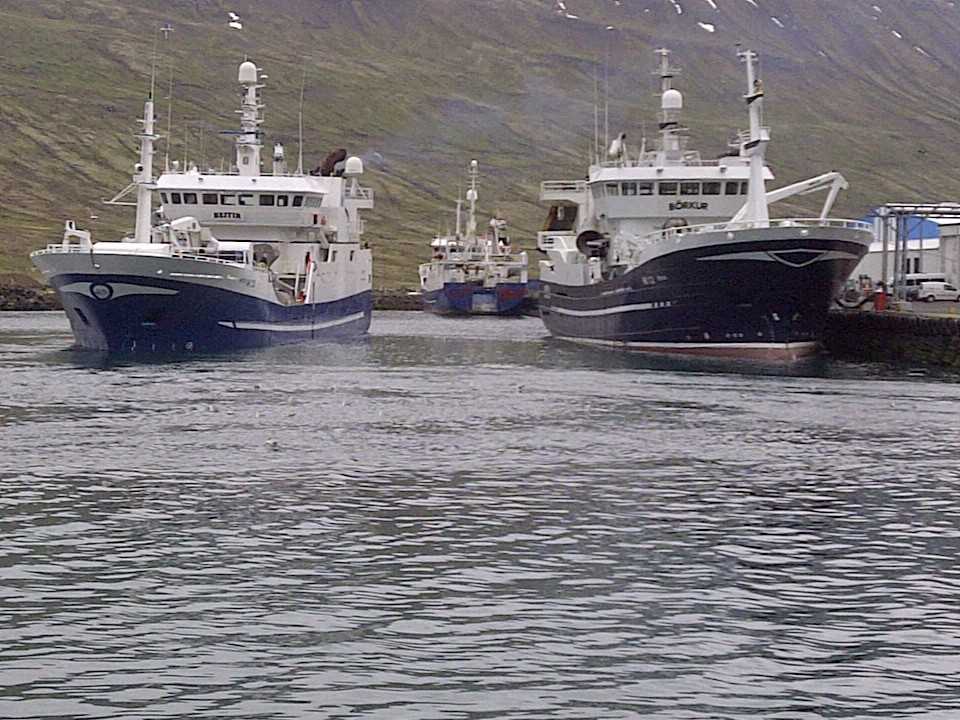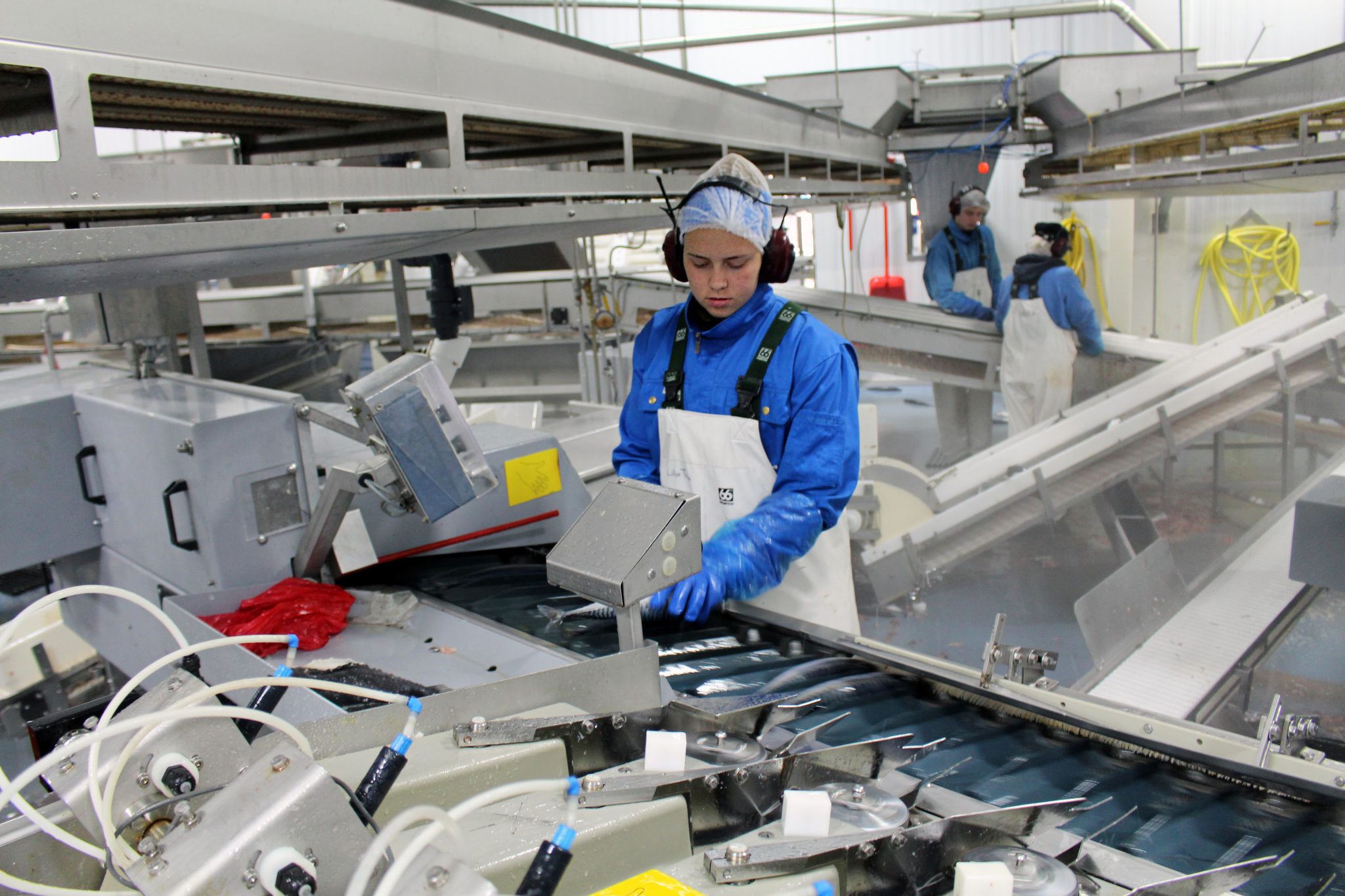A Vision of the Future Becomes Reality
In the late 19th century, Norwegian fishermen arrived in the Eastfjords to fish for herring, and this is how their Icelandic counterparts learned about the ‘silver of the sea’. There was a certain excitement surrounding this activity due to the fact that salted herring was able to fetch high prices on the export market. As the new industry began to take off on the East Coast, the process of salting cod also found its beginnings there, fetching high prices especially in Southern Europe. As a result of these successes, people’s attitudes towards fishery in Iceland began to change, and more and more were convinced that fisheries should be developed into an independent industry.
 A Society Built on Fish
A Society Built on Fish
The growing emphasis on fisheries also changed society in the East fjords. Small fishing villages sprang up between the mountainous fjords where the growing population made a living mainly from fishing and the fishing industry and to a lesser extent, farming. The stories of the villages are to a high degree marked by economic ups and downs—sometimes fishing was successful, sometimes not. Prices for fish fluctuated and the development of the industry itself, along with evolving processing methods influenced every aspect of daily life. Most of the ups and downs were determined by the herring itself—during the golden herring era its numbers increased steadily, but suddenly the fish disappeared without warning. ‘Herring comes and herring goes’ is a saying in the fjords.
Neskaupstaður – A Powerful Fishing Town
At the end of the 19th century, a village arose on the shores of Nordfjörður fjord. It was a convenient place for setting sail and as the number of fishing vessels increased, the need for manpower to process the catch also increased. By 1929, the population of village had grown to 1100 and had become an independent municipality known as Neskaupstaður.
In 1952, a new herring era began in the East fjords, leading to a so-called ‘herring boom’. Fish was salted in Neskaupstaður, but in order for the town to be considered a genuine herring town, it had to build facilities to produce fish-meal and fish oil. In 1957, a public holding company was founded in order to build these facilities. ‘Síldarvinnslan’ as it came to be called, was owned by many local firms and individuals, whereas the fisherman’s cooperative held the majority of the shares, or 60%. Their vision for the company was that Síldarvinnslan should grow and prosper and become a leading company within the fishing sector. In 1958, Síldarvinnslan built a fish-meal and fish oil plant that processed a total of 4000 tons of herring. The following years yielded extremely good catches and in 1966, approximately 107,000 tons of herring passed through the production lines. The activity of the plant laid the foundation for this powerful company in the coming years.
 Diversity of Production
Diversity of Production
However, Síldarvinnslan’s owners did not settle for just fish-meal and oil production. In 1965, the company bought two herring boats, and in 1967, two more were added to the fleet. In the same year the company began salting and freezing fish. Síldarvinnslan continued to diversify; but when the herring disappeared once again, it was time to develop new fields, such as capelin fishery and deep sea fishery. The company decided to sell the herring boats and invest in modern ships suitable for capelin and cod fishing. With the new ships, the pelagic catch grew significantly.
The disaster of ‘74
On 20th December 1974, a disaster hit Neskaupstaður and Síldarvinnslan. Two avalanches came down the mountains above the town, demolishing the fish-meal plant and causing extensive damage to the freezing plant and other facilities. Twelve men lost their lives, among them were seven workers from Síldarvinnslan. Rebuilding started immediately after the rescue operations were finished. For a time, production was limited to salting, as repairs on the freezing plant and other facilities moved forward, and along with the building of a brand new plant for fish-meal and oil at the new Nordfjörður harbour, Síldarvinnslan’s new facilities were fully operational in 1976.
Leading company
Síldarvinnslan is one of the most successful fishing companies in Iceland today. The company runs a fully equipped fish processing plant in Neskaupstaður and fish-meal and fish oil production in Neskaupstaður, Helguvík and Seyðisfjörður. It also operates five ships–three for pelagic fishery and two for deep sea fishing.
The story of Neskaupstaður and Síldarvinnslan is inextricably linked together. It is the saga of a small 19th century fishing village that developed into an industrious fishing town using the highest technological advances available. From its humble beginnings, Síldarvinnslan has had a considerable influence on the development of the fishing industry in Iceland, and it can be rightly said that its vision from the beginning has been fulfilled in every way.
Visitors to Neskaupstaður can see many of the places that have contributed to the history of the town, and the maritime museum is full of many interesting artifacts and displays that bring Neskaupstaður’s colourful past to life.
Text: Smári Gestsson



